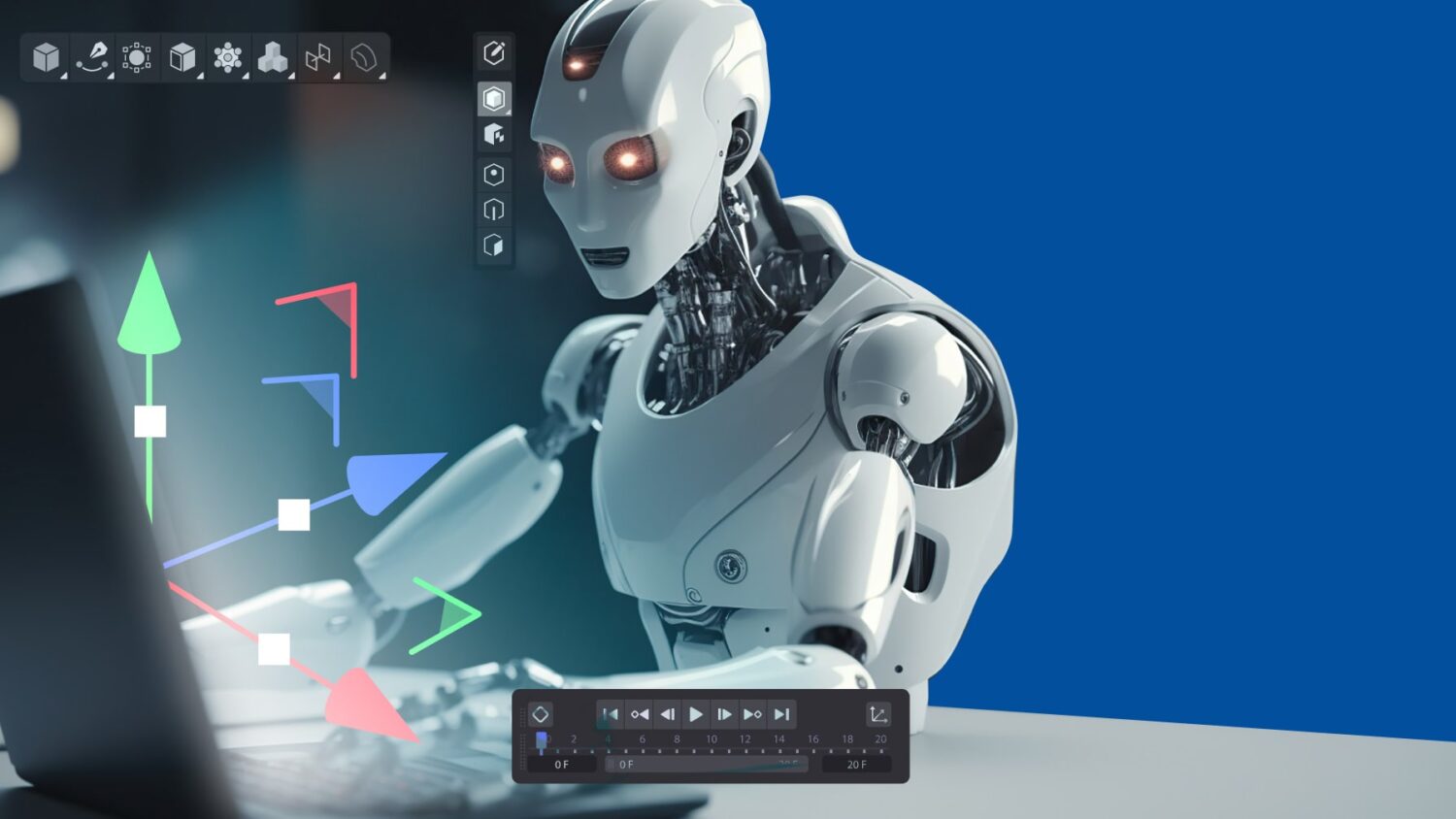AI has totally got into our work, our daily lives, and literally speaking in every aspect of our knowledge and perception. Professionals in animation and cinema are particularly aware and sort of concerned about the transformative impact AI has brought to their fields, changing careers, appointments, recruitments and perspectives. In the fast changing world of creative animation, a deep fear has been casting a shadow on those working in the industry, as the sudden existence and interference of AI threatens to reshape the framework of their work and life. What began with character and concept designers encountering AI competitors like Midjourney has now spread through to animators, who find themselves on the verge of getting sacked and finally omitted as AI tools do their job in faster and more cost effective ways.
Who could imagine this? A job that used to need really skilled animators now just needs regular people with simple tools. Even voice actors aren’t safe from this powerful change and they stand on a sharp blade of job displacement under similar circumstances. One might rightfully wonder: What’s happening? Are we moving towards the absolute dominance of AI? Is this rapid wave of change a threat or a portal to astonishing opportunity? Nowadays, it’s clear that AI plays a big part in bringing stories to life on screen by being a part of animation. As animators use AI-driven tools, they find both good and bad sides to them, which affect how they create and what they end up with. Therefore, debating whether AI poses a threat to companies or offers opportunities seems pointless. Instead, let’s explore the key pros and cons of AI in animation.
Advantages of AI in Animation
Tireless & Hassle Free Efficiency
AI-powered animation tools have meticulously made the animation process smoother, providing animators with a quicker way from idea to finished product. By tirelessly handling complicated tasks, AI reduces the time and effort required for animators to bring their visions to life. This efficiency allows for faster completion times and increased productivity in animation studios, and every studio owner would appreciate such a combination of speed, precision, and high quality.
Cost-Effectiveness
AI-driven animation not only saves time but also reduces costs significantly. By flawlessly handling meticulous and time-consuming tasks, studios can use resources more effectively, potentially cutting production expenses. This cost-effectiveness makes animation more available to smaller studios and independent creators, opening up the field and encouraging innovation.
Consistent Quality
AI algorithms ensure a consistent level of quality throughout the animation process. By following specific rules and patterns already set, AI-driven animations stay consistent and coherent, minimizing the risk of errors or inconsistencies. This consistency is especially valuable in large-scale and high budgeted projects where maintaining quality standards is crucial.
Canny Mastery
AI-driven tools have effectively overcome one of the scariest and toughest challenges: the Uncanny Valley. The term uncanny valley refers to the unpleasant feeling people experience when they encounter humanoid characters or objects that look almost, but not quite, human. It occurs when characters or objects are realistic enough to be recognizable as humanlike, but still contain and convey subtle imperfections that make them seem bizarre or unnatural.
Thanks to AI, the issue of the uncanny valley is resolved. AI is adept at managing complicated calculations and animations, tasks that human animators might find difficult to do manually. From detailed movements to lively simulations, AI algorithms can handle animation intricacies with precision and accuracy, expanding the possibilities in visual creation.
read more about this : The uncanny valley, explained: Why you might find AI creepy
Reachability and Convenience
The integration of AI in animation tools has made animation more accessible to individuals with varying levels of expertise. With user-friendly interfaces and intuitive features, AI-driven software empowers aspiring animators to explore their creativity without the need for extensive technical knowledge. This accessibility fosters diversity and encourages new voices to enter the animation industry.
Versatile pipeline
AI-driven animation tools can easily scale to accommodate projects of various sizes and complexities. Whether it’s a short film, a television series, or a full-length feature, AI algorithms can adapt to the demands of the project, ensuring that production remains efficient and cost-effective regardless of scale.
Flawless Workflow: AI-powered collaboration tools facilitate continuous communication and workflow management among team members. With real-time feedback mechanisms, animators can collaborate more effectively, share resources, and restate on designs efficiently, enhancing overall productivity and creativity.
Analytical Insights
AI analytics can provide updated insights into audience preferences, trends, and engagement measures, helping animators make informed decisions about content creation and audience reception. By using analytical insights, animators can enhance viewer satisfaction and engagement.
Adaptive Learning
AI algorithms can adapt and learn from past experiences and user feedback, continuously improving and optimizing animation techniques and workflows over time. Through machine learning algorithms, animators can refine their skills, explore new creative approaches, and stay ahead of industry trends, ensuring that their animations remain fresh, innovative, and relevant in a rapidly evolving landscape.
The Challenges of AI in Animation
Lack of Creativity
Despite its efficiency, AI lacks the emotional as well as rational intelligence and creativity that is taken for granted in human animators. AI operates based on algorithms and patterns, resulting in animations that up to this date lack originality and the emotional touch. The absence of emotional depth and masterful storytelling in AI-driven animations can reduce their impact and engagement with audiences.
Must read : Fading Magic: Decline of Disney’s Storytelling Mastery
Toxic Prevalence of Technique Over Art
Overreliance on AI-driven solutions can stifle artistic expression and innovation in animation. When animators depend too heavily on AI-generated techniques, they risk losing sight of their unique artistic vision and creative intuition. Balancing the benefits of AI with the need for human ingenuity is essential to preserving the authenticity and soul of animated storytelling.
Limited Adaptability
While AI algorithms can adapt to predefined parameters, they badly struggle with truly unexpected situations or creative demands that require human problem-solving skills and improvisation. The rigid nature of AI-driven animations can limit their ability to respond dynamically to evolving narratives or artistic inspirations, confining the creative process and affectability.
Dependency on Unconfirmed Data
a) AI algorithms rely on vast amounts of unconfirmed and uncredited data, which are based on individual tastes and sometimes trial and error, to learn and improve over time.
b) Privacy and Security: This dependency raises concerns about data credibility as well as privacy and security, especially when sensitive information is involved. Safeguarding data integrity and ensuring ethical practices in AI-driven animation are crucial to maintaining trust and accountability in the industry.
Technical Challenges
Implementing AI-driven animation systems can pose technical challenges, including integration issues, software compatibility, and the need for specialized training. Overcoming these obstacles requires investment in infrastructure and resources, as well as ongoing support to address emerging technologies and developing industry standards.
Company Downsize
The automation of certain animation tasks by AI could lead to job displacement for traditional animators, as some tasks may become redundant or automated, potentially reducing employment opportunities within the industry.
Learning Curve
The adoption of AI-driven tools and techniques may require significant time and resources for animators to learn and adapt to, particularly for those who are not familiar with advanced technology or programming concepts.
Algorithmic Bias
AI algorithms used in animation may inadvertently create and grow biases present in the data used for training, leading to stereotypical representations of certain features in animated content.
Final verdict on the penetration of AI in Animation
As animators keep adapting to use the complexities of AI-driven animation, holding a balance between efficiency and creativity becomes the key point. While AI offers unprecedented opportunities to update production processes and pave the ground of painstaking tasks, its limitations highlight the irreplaceable value of human imagination and artistic expression.
That is why at Dream Farm Studios we have welcomed AI as a tool to enhance rather than replace human creativity, so now we can enjoy its potential to strengthen our vision and bring stories to life in ways previously impossible. As technology continues to evolve, the future of animation lies at the intersection of human genius and technological innovation, where creativity is no longer a product of human brain.
In the ever-changing world of animation, the journey towards finding this balance is as exciting as the stories we bring to life on screen. As we embrace the opportunities and face with the challenges of AI-driven animation, we need to embark on this journey with a committed sense of attachment to the globally recognized art of storytelling.


